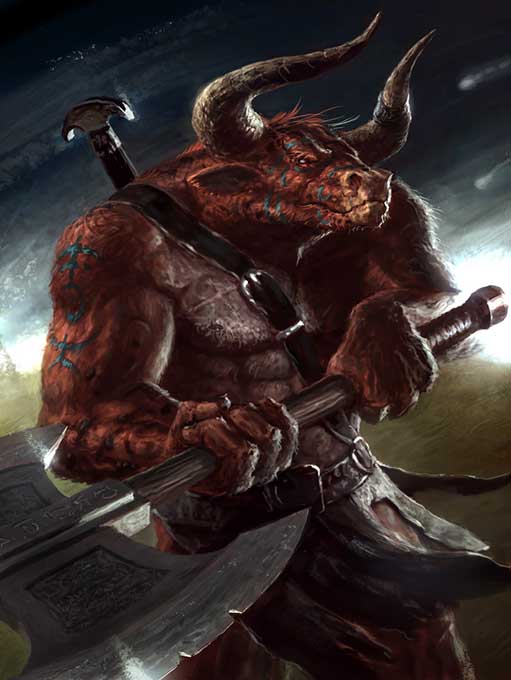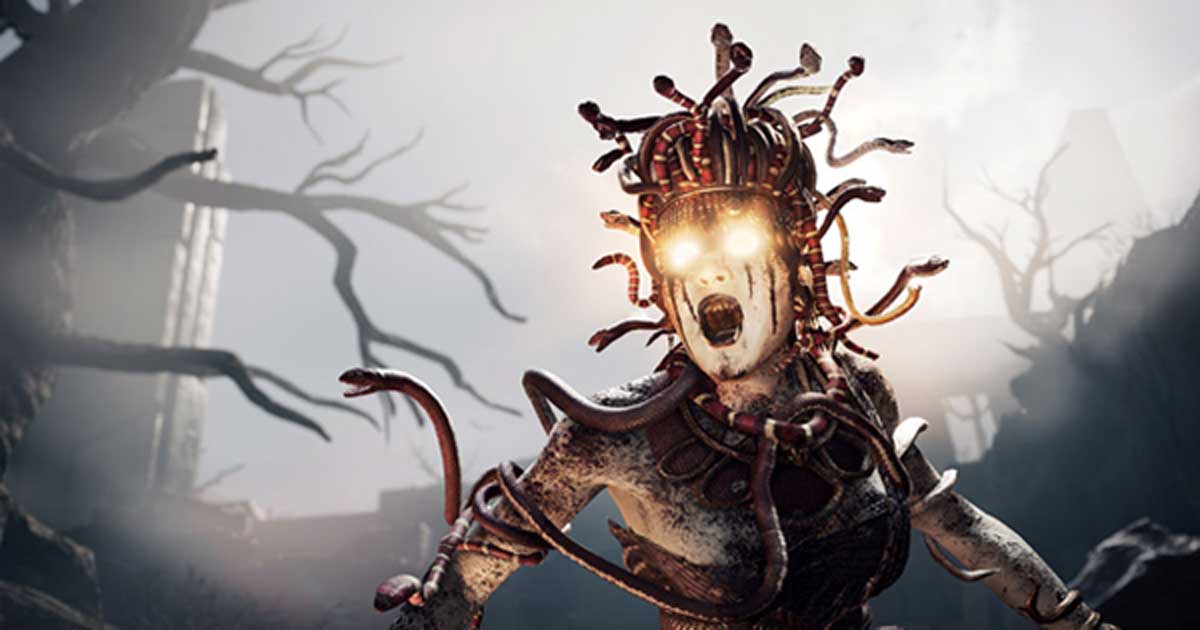Ancient Greek Myth in Assassin’s Creed Odyssey: Medusa, The Minotaur and More?
The upcoming Assassin’s Creed: Odyssey game gives players a glimpse at the mythology of ancient Greece. How big of a step the creators have taken into that realm is still under wraps, but when the game is launched on October 5 more details will be revealed. So far, it is said that Medusa and the Minotaur may be two major boss battles. Read on to find out more about these mythological creatures and take a first look at the role of ancient Greek myth in Assassin’s Creed: Odyssey.
Medusa in Assassin’s Creed: Odyssey
In ancient Greek myth, Medusa is a terrifying creature with snakes for hair. Her gaze is said to turn a man to stone. As Ancient Origins has previously reported, “The earliest known record about the myth of Medusa and the Gorgons can be found in Hesiod’s Theogony.” Hesiod writes that Medusa and her two sisters, the Gorgons Sthenno and Euryale, were the children of Phorcys and Ceto. Of the three, only Medusa is mortal and she is killed by Perseus.
A more comprehensive version of the story comes from Ovid’s Metamorphoses. Ovid explains that Medusa was originally being a beautiful maiden and she caught the eye of Poseidon. Athena discovered the sea god ravaged Medusa in her shrine, so she “sought vengeance by transforming Medusa’s hair into snakes, so that anyone who gazed at her directly would be turned into stone.”
- The Legend of Medusa and the Gorgons
- Outstanding Reconstruction of Ancient Egypt in Next Assassin’s Creed Including Combat-Free Educational Mode

Concept art: Medusa, Assassin’s Creed. (Assassin’s Creed Wiki)
Perseus kills Medusa after Seriphus’ king, Polydectes, sends the legendary Greek hero on a quest to bring him Medusa’s head. It was just a trick so the king could get closer to Perseus’ mother, Danae. But Perseus was able to spite the king by killing Medusa while she was sleeping, thanks to some help from the gods.
In Assassin’s Creed: Odyssey, Medusa is introduced to the player after he/she meets a young woman named Bryce who is accused of sacrificing her lover to an evil creature. The player’s job is to choose if he/she will help Bryce track down her lost love and defeat the beast.
The Minotaur in Assassin’s Creed: Odyssey
The legendary Minotaur was the result of a Cretan queen, Pasiphae, mating with a bull (she was under a curse placed on her by Poseidon who was angry with her husband, Minos). The Minotaur was half man and half bull and its desire to consume human flesh disgusted King Minos. After receiving advice from the Oracle at Delphi, Minos had a labyrinth with unlimited corridors and cells built to hold the Minotaur captive near his palace in Knossos. It was said that anyone who entered the maze could not escape.

Minotaur. (Cloister/Deviant Art)
When Minos’ son Androgeus was killed by Athenians, the king declared war. His army won and Minos ordered Athens to sacrifice seven young men and seven young women to the Minotaur every nine years. But Theseus, son of Aegeus, king of Athens, was eventually sent to end the sacrifices and kill the Minotaur.
Theseus accomplished this feat with the help of Minos’s daughter, Ariadne, who had fallen in love with the Greek hero.
According to PC GamesN, a fight against the Minotaur in Assassin’s Creed: Odyssey has been hinted at through “an over-the-shoulder shot of a vast horned beast” presented at Ubisoft’s E3 conference. Exactly how that fight will go down is a surprise.

Does this screenshot mean you can fight a Minotaur in Assassin’s Creed: Odyssey? (PC GamesN)
Why Are There Creatures from Ancient Greek Myth in Assassin’s Creed?
You may be wondering why Assassin’s Creed is including mythological creatures at all. When Jonathan Dumont, the creative director on Assassin’s Creed: Odyssey, was asked the reason why the creators have included myth in this game alongside historical figures, he told Dean Takahashi of GamesBeat:
“With your character being a product of that environment as well, they believe in the myths. They believe in the gods. We wanted to create a bit of that bridge. Trying to do ancient Greece without touching on any of that would be a missed opportunity. It fits into your exploration of the first civilization and the artifacts and what they could do. You’re seeing a simulation through that character, and you’ll learn through the game about what you’re actually seeing. It’s interesting to explore. There are so many things to pick from, so we made some choices there.”
- Perseus: Powerful Demigod wth Mighty Weapons
- Medusa and the Gorgons: The Origins of the Legendary Tale
- The Bird and the Serpent: From the Neolithic Goddesses to Ancient Chinese Symbols of Nobility and Benevolence

Battling Medusa and her re-animated stone statues in Assassin’s Creed: Odyssey. (Ubisoft)
Game Director Scott Phillips has also provided some explanation on why there is Greek myth in Assassin’s Creed: Odyssey. He said,
“In our world, there are these ancient artifacts… First Civilization artifacts. They are guardian devices, they protect First Civilization sites such as this. They can corrupt human beings, regular human beings… into this defense mechanism, which is Medusa in this case. You’re sort of a special character. You have this close First Civilization DNA. You have the Spear of Leonidas, which is an artifact, so you’re able to fight against them. Whereas a normal just gets turned to stone, you are slowed down and damaged by it, but you’re not necessarily killed by it.”
It is worth mentioning that while Medusa is introduced in the main story, players have a choice on how far they want to go into the mythological elements of the game. This may be true for any other mythological Greek creatures which are available opponents in gameplay as well.
Top Image: Medusa in Assassin’s Creed: Odyssey. There are other creatures from ancient Greek myth in Assassin’s Creed as well. Source: Assassin’s Creed Wiki

















